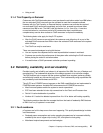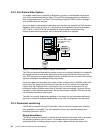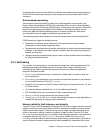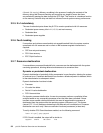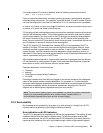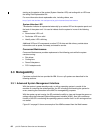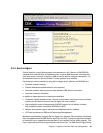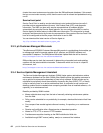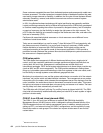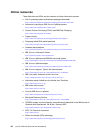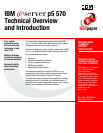
64 p5-570 Technical Overview and Introduction
Some customers expanded the use of their dedicated systems and consequently model more
business processes. This often caused an increased number of dedicated systems that were
used and a stronger demand on flexibility. In addition, the life cycle of these systems differed
extremely. Renaming, removal, and deletion became more and more common system
administration tasks.
In 2001, the pSeries hardware technology with logical partitioning was generally available.
Logical partitioning creates the ability to define the logical partitions (LPARs) that are adapted
to customer needs regarding the number of processors, assigned memory, and I/O adapters:
no waste of resources, but the flexibility to assign the right power at the right moment. The
p5-570 offers the flexibility to increase the usage of the resources even more, and reduce the
total cost of ownership (TCO).
Partitions with associated physical resources or virtual resources are not different from a
collection of stand-alone nodes.
Today, server consolidation is a must for many IT sites. Minimized TCO and complexity, with
the maximum amount of flexibility, is a crucial goal of nearly all customers. LPARs enable
flexible distribution of resources with LPAR boundaries. Each logical partition can be
configured according to the specific needs of the occupant application. LPARs provide a
protection boundary between the systems. More test and development systems can exist on
the same server in separate partitions.
CSM value points
The CSM allows the management of different hardware platforms from a single point of
control, and it has consistent interfaces to manage systems and logical partitions that are
running both AIX and Linux. Management is achieved across multiple switch and
interconnect topologies. PSSP forced system administrators to do some things a certain way
(such as NIM, and SP user management). The CSM provides assistance in setting these
things up, but enables system administrators to tailor their systems to their own needs, and it
has the ability to manage systems across different geographical sites.
Monitoring is much easier to use, and the system administrator can monitor all of the network
interfaces, not just the switch and administrative interfaces. The management server pushes
information out to the nodes, which releases the management server from having to trust the
node. In addition, the nodes do not have to be network-connected to each other. This means
that giving root access on one node does not mean giving root access on all nodes. The base
security setup is all done automatically at install time.
The CSM ships with AIX itself (a 60-day Try and Buy license is shipped with AIX). The CSM
client side is automatically installed and ready when you install AIX, so each system or logical
partition is cluster-ready.
CSM V1.4 on AIX and Linux (planned 4Q04)
The CSM V1.4 on AIX and Linux introduces an optional IBM CSM High Availability
Management Server (HA MS) feature, which is designed to allow automated failover of the
CSM management server to a backup management server. In addition, sample scripts for
setting up NTP
1
, and network tuning (AIX ONLY) configurations, and the capability to copy
files across nodes or node groups in the cluster can improve cluster ease of use and site
customization.
1
Network Time Protocol



